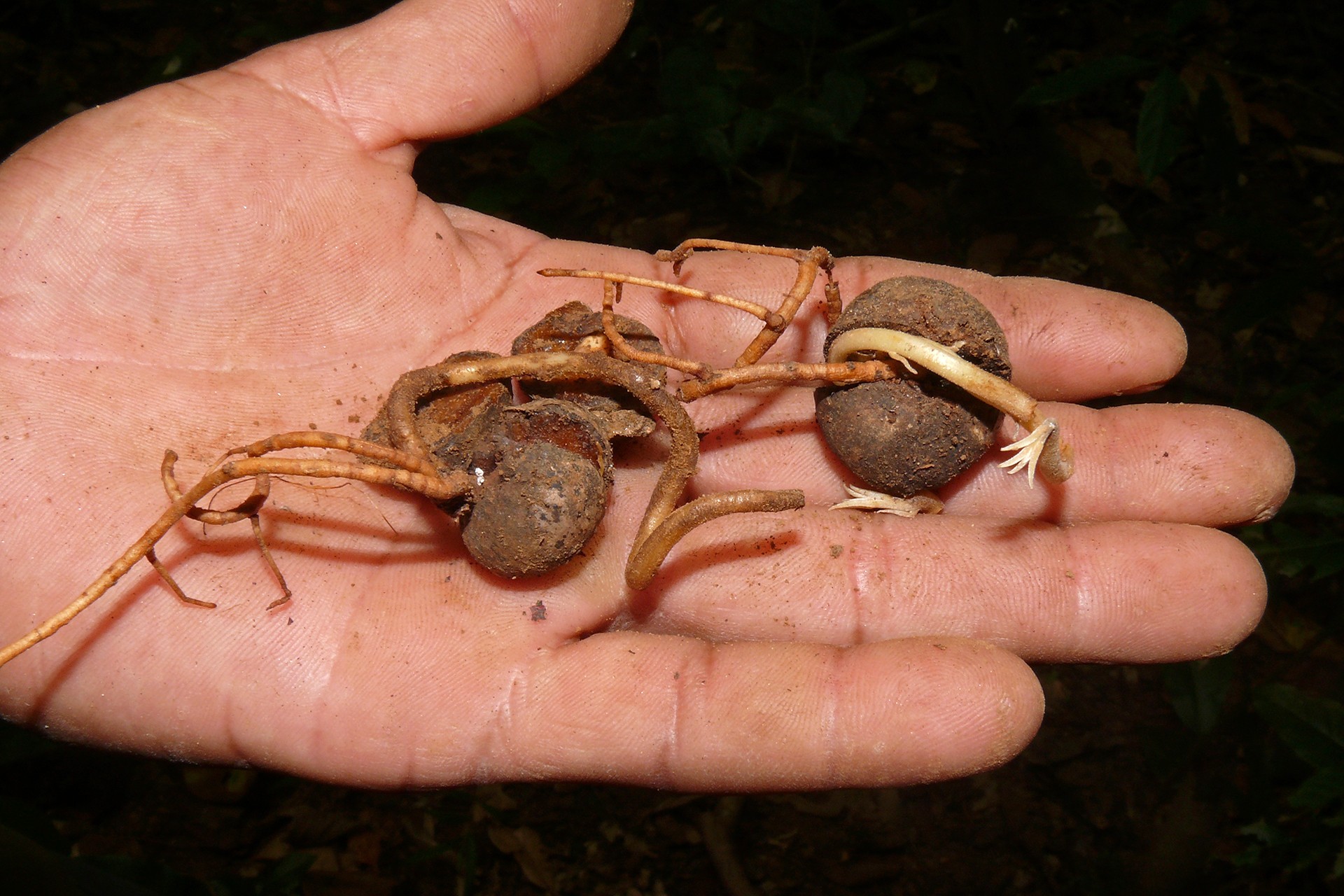This is the first story in a series of articles on frugivory and seed dispersal, leading up to the FSD 2020 symposium in March next year.
Rodents are certainly not the first animals that come to mind when one thinks of forests. Most of us are disgusted by the thought of rats and the like, think them gluttonous, and associate them with disease and famine. Is it possible then to imagine that they might serve any purpose in a forest? With this in mind, one rainy day in 2011, we crossed a river and walked into the forest of Pakke Tiger Reserve in Arunachal Pradesh.
Following seeds on the forest floor
In a forest, thousands and thousands of seeds fall on the forest floor hoping to germinate. And, rodents have an appetite for the seeds of many of these tree species among other things. That day in Pakke, we were setting up experiments to look at how rodents determine the fate of seeds, and by extension, perhaps that of trees. We collected over ten thousand seeds from under the fruiting trees, marked them by attaching a small length of fishing line to each seed, and placed them in small clearings on the forest floor. We tracked the seeds over the coming weeks and set out camera traps to spy on animals that came to these ‘seed cafes’.
Seeds to eat or takeaway
Camera trap photos showed that two species of forest rats – the larger rats of the genus Rattus, a close cousin of the kind we find in our cities, and the smaller, cuter, White-bellied Rats of the genus Niviventer – were the most frequent visitors to the seed cafes. They picked the seeds mostly one at a time (two when greedy) in their mouths as takeaways. The second most common visitors were the Himalayan Porcupine and the Brush-tailed Porcupine, two large rodents. Unlike the rats, they both chose to eat the seeds then and there. Hoary-bellied Squirrel, a rodent that spends a lot of time in trees, came to the ground to eat seeds of one tree species but carried away seeds of another. We wondered whether anything in the make-up of seeds themselves may have prompted the animals to eat or carry them away? As it turns out, soft seeds were easier to break and so the porcupines relished eating those immediately. Seeds that were carried away by the rats were the ones that were smaller and easier to move, and with harder seed-coats which added to their shelf life.
Rats scatter and store seeds
Out of the several thousand seeds that we presented at the cafes, one-tenth of it was eaten on the spot and nearly half of them were carried away, largely by rodents. What happened to the seeds that were carried away by the rodents? Searching for the fishing lines, we were able to track hundreds of seeds and found most of them scattered on the ground among fallen leaves, as close as one foot and as far as sixty feet, from their original place. These seeds were being cached for a future meal. Within days, rodents moved these seeds again but cut the fishing lines, and so we lost track of most of them. Studies from other regions show that rodents store seeds in a place only temporarily and keep moving them to a new spot, again and again.
A game of hide and seek
For forest rats, seeds are precious future meals that are constantly moved for their protection and they probably don’t want to keep all their seeds in the same basket anyway. As a single rat moves several seeds over the course of several nights, many are eaten but some are forgotten. These forgotten seeds escape being eaten. If we were to liken this to a hide and seek game, the hidden seeds that are never found out are the winners, as they stand a chance to germinate at a new place.
A forest is shuffled
We found that rats move a lot of seeds inside forests and by tracking hundreds of intact seeds after their removal from cafes, found evidence for seed caching. Since we lost many of our seeds, we do not know how many were finally eaten or germinated. Only by successfully tracking a lot of seeds until the end of their fate, one can find out if rodents are simply greedy eaters or are helping seeds to germinate. What we do know is that these diminutive beings are mediating what happens to the seeds falling on the forest floor, by eating them and shuffling them around, and in this way shaping our forests.
An exciting find
Apart from rodents, several other animals visited our seed cafes. One of the most surprising was a kind of cricket of genus Brachytrupes that cached seeds underground. These crickets were extremely active during the monsoon season and buried seeds up to a foot deep below the surface. When we dug out some of these caches to look at seeds, we found that many of these seeds were germinating and some of these caches still had crickets inside them.
References
1. Original paper: Swati Sidhu and Aparajita Datta (2015) Tracking seed fates of tropical tree species: Evidence for seed caching in a tropical forest in North-East India. PlosOne.
2. Nature Conservation Foundation blog by Janhavi Rajan: The fate of seeds: What have rodents got to do with it?












